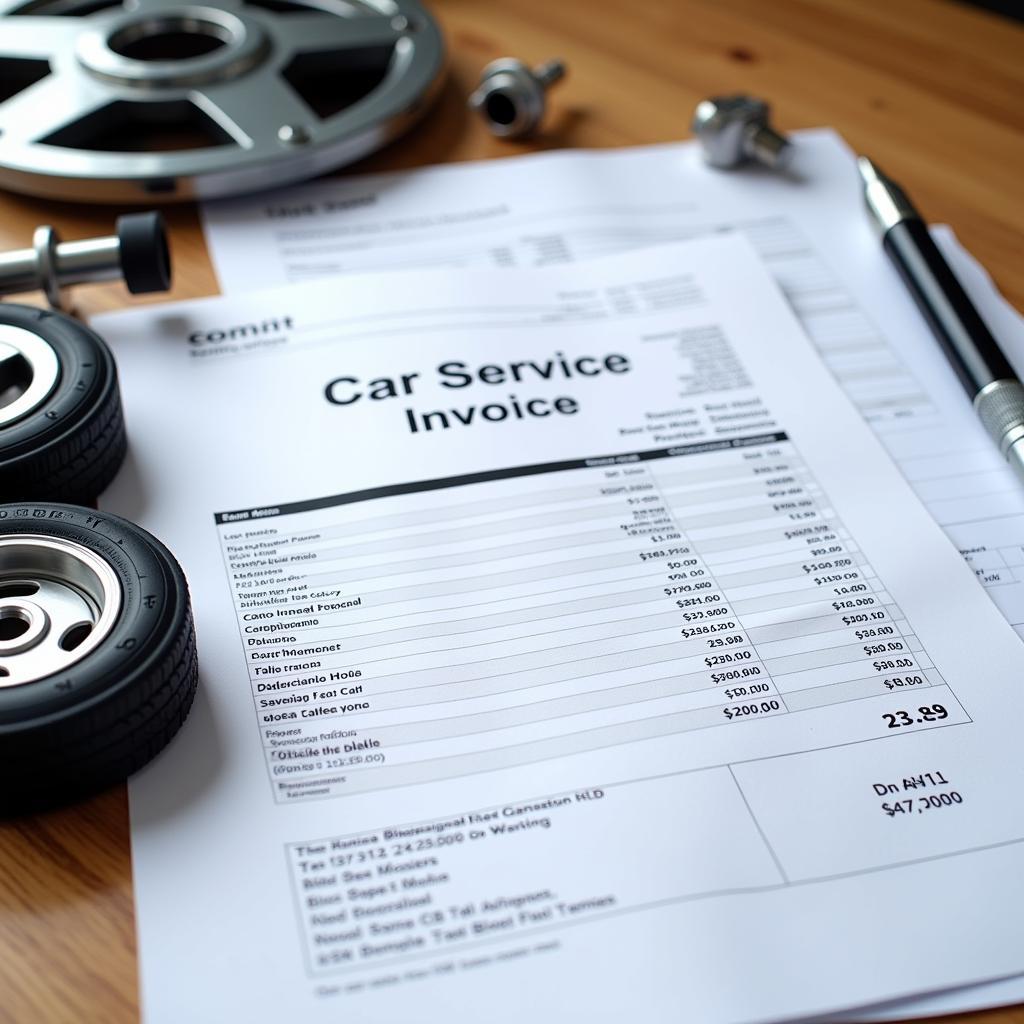What to Check in a Car Service
Regular car servicing is crucial for maintaining your vehicle’s performance, safety, and longevity. Knowing What To Check In A Car Service empowers you to ensure thorough maintenance and avoid unexpected issues down the road. This comprehensive guide will walk you through the essential checks involved in a car service, enabling you to communicate effectively with your mechanic and make informed decisions about your vehicle’s care.
You can learn how to anticipate necessary maintenance by checking when your car service is due. This proactive approach helps avoid costly repairs and ensures your vehicle’s optimal performance.
What exactly happens during a car service? Several key components and systems undergo rigorous checks to identify potential problems and ensure they’re functioning correctly. From fluid levels to brake systems, understanding these checks is paramount for every car owner.
Essential Checks During a Car Service
A typical car service involves a series of checks categorized by the vehicle’s essential systems. These checks ensure that all components work harmoniously for optimal performance and safety.
Fluid Level Checks
One of the most fundamental aspects of a car service involves checking various fluid levels. This includes engine oil, coolant, brake fluid, power steering fluid, and transmission fluid. Maintaining proper fluid levels is essential for preventing damage and ensuring smooth operation. Low fluid levels can indicate leaks or other issues requiring immediate attention.
- Engine Oil: The lifeblood of your engine, oil lubricates moving parts, reduces friction, and helps regulate temperature.
- Coolant: Keeps the engine from overheating, preventing catastrophic damage.
- Brake Fluid: Essential for proper brake function, ensuring safe stopping power.
- Power Steering Fluid: Makes steering effortless and responsive.
- Transmission Fluid: Facilitates smooth gear changes and protects the transmission.
Brake System Inspection
The braking system is arguably the most critical safety feature in your vehicle. During a service, technicians thoroughly inspect brake pads, rotors, calipers, and brake lines for wear and tear. They also check the brake fluid level and condition.
- Brake Pads: Responsible for creating friction to stop the vehicle.
- Rotors: The metal discs that the brake pads clamp down on.
- Calipers: House the brake pads and pistons that apply pressure to the rotors.
- Brake Lines: Carry brake fluid from the master cylinder to the brakes.
Want to keep track of your vehicle’s maintenance history? Learn how to check your car service history to stay informed about past services and anticipate future maintenance needs. This will help you stay organized and ensure your car receives the necessary care.
Tire Condition and Pressure
Tires are the only point of contact between your car and the road. Checking tire pressure and condition is vital for safety and fuel efficiency. Technicians inspect tire tread depth, look for signs of damage, and ensure proper inflation. Uneven tire wear can indicate alignment issues.
- Tread Depth: Sufficient tread depth is crucial for grip and traction.
- Tire Pressure: Proper inflation ensures optimal performance and fuel economy.
- Damage: Cuts, bulges, or punctures compromise tire integrity.
Lights and Electrical System
A car service also includes checking all lights, including headlights, taillights, brake lights, and turn signals. The electrical system, including the battery and alternator, is also inspected.
- Lights: Ensures visibility and proper signaling to other drivers.
- Battery: Provides power to start the engine and operate electrical components.
- Alternator: Charges the battery while the engine is running.
You can verify the maintenance history of a vehicle online. Knowing how to check the service record of a car online allows you to confirm the vehicle’s maintenance history and avoid potential problems. This is particularly important when purchasing a used car.
 Checking lights and electrical systems during a car service
Checking lights and electrical systems during a car service
Conclusion
Understanding what to check in a car service equips you with the knowledge to maintain your vehicle effectively. By being aware of these essential checks, you can communicate effectively with your mechanic and ensure your car receives the necessary care for optimal performance, safety, and longevity. Regular servicing is an investment that protects your vehicle and provides peace of mind on the road. Remember, proactive maintenance is always better than reactive repairs. Are you ready to schedule your next car service?
FAQ
- How often should I get my car serviced? Consult your owner’s manual for recommended service intervals.
- What is the difference between a full service and an interim service? A full service is more comprehensive and covers more checks than an interim service.
- How much does a car service cost? The cost varies depending on the type of service, your vehicle’s make and model, and the location of the service center.
- Can I service my car myself? While some basic maintenance tasks can be performed at home, it’s recommended to have your car serviced by a qualified mechanic.
- What should I do if my car breaks down between services? Contact a reputable breakdown service or your local garage.
Have you ever wondered what they check on a full car service? A full car service provides a comprehensive check of all major systems, ensuring your car is in optimal condition.
Can you check your car’s service history? Absolutely! Knowing how to check the service history of your car allows you to stay informed about past maintenance and plan for future service needs.
Need Help? Contact Us!
For further assistance or to schedule a car service, please contact us via WhatsApp: +1(641)206-8880, Email: [email protected] or visit us at 456 Oak Avenue, Miami, FL 33101, USA. Our 24/7 customer support team is ready to help.

